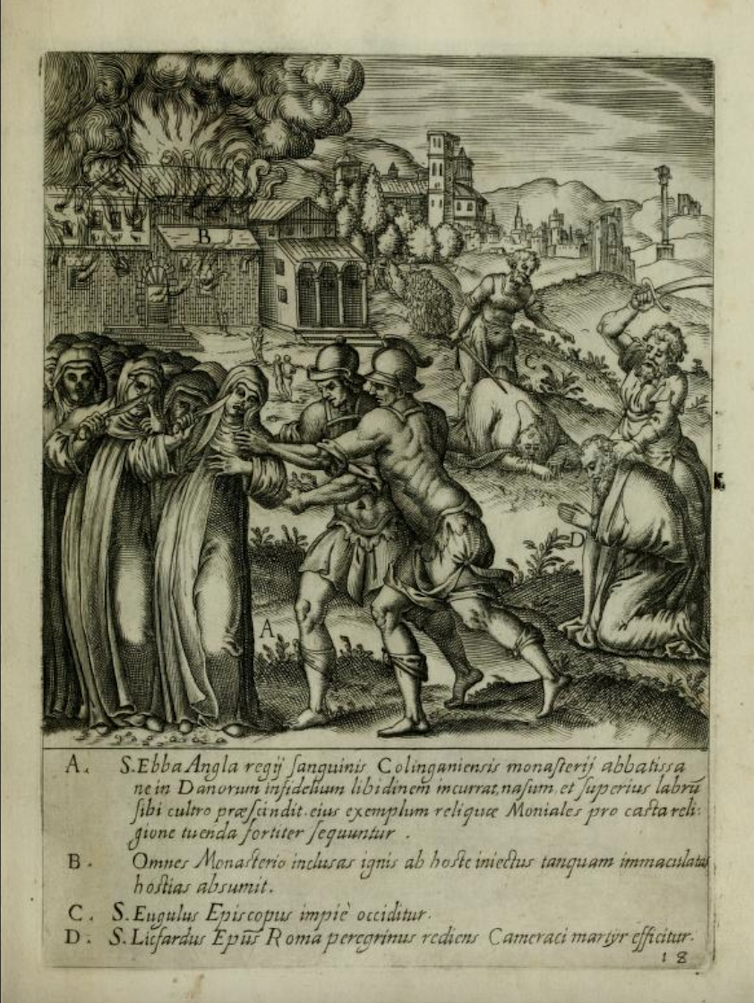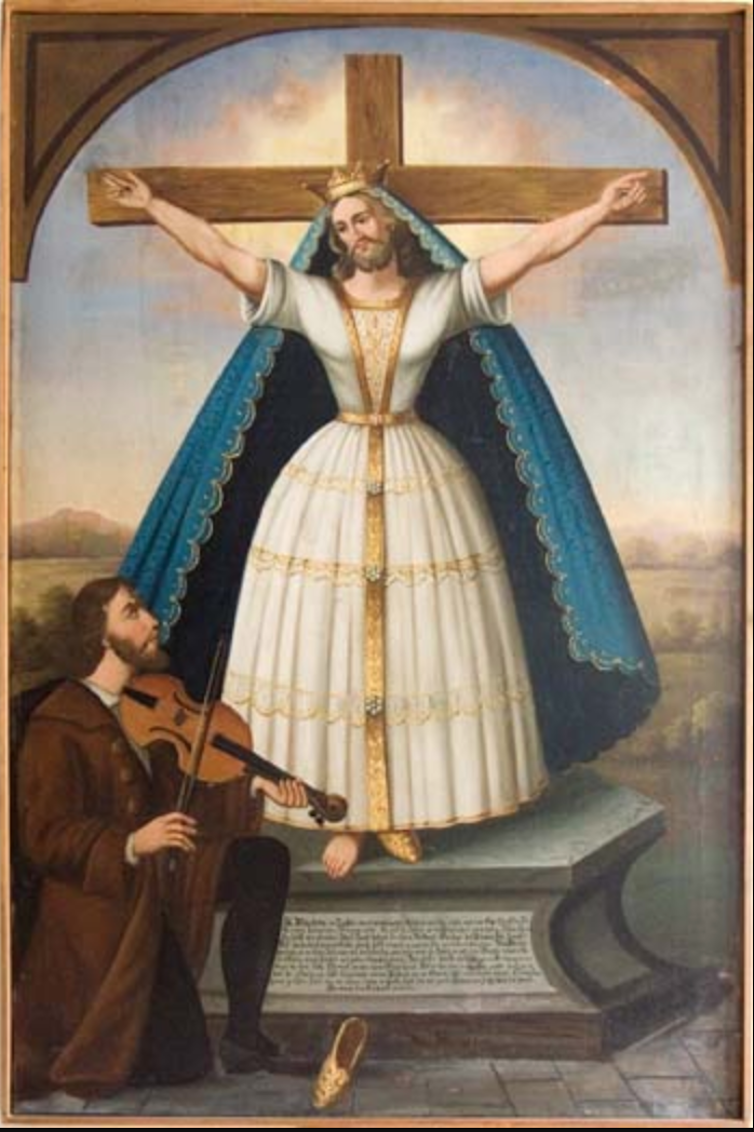Beauty ideals Were As Tough In the Middle Ages As They Are Now

After turning up at this year’s Grammys, Madonna was subjected to a vitriolic online attack over her appearance, particularly what was deemed her excessive use of plastic surgery. The irrepressible 64-year-old instantly hit back, saying:
Once again I am caught in the glare of ageism and misogyny that permeates the world we live in. I look forward to many more years of subversive behaviour pushing boundaries.
It’s a familiar story. Standards of beauty have been embedded in different cultures, in varying forms, from time immemorial. The standards that women and, increasingly, all people are expected to meet to embody a certain level of beauty, are often based on binary notions of idealised forms of femininity or masculinity, or both.
Also read: Fair Skin, Pre-Colonialism Beauty Standard That Persists
Women’s bodies have been pathologised throughout history, from Plato’s notion of the “wandering womb” which was used to account for every female physical and emotional ailment. In medieval humoral theory, women were considered cold and wet in constitution, and more prone to certain afflictions.
The association of beauty with health, and ugliness with disease, has been taken up in more recent feminist debate over the modern cultural obsession with women’s appearance as an epidemic. It’s no wonder that instances of anxiety, depression, eating disorders and dysmorphia can all be connected to modern – and indeed, pre-modern – people’s experience of beauty standards.
In her 1991 book The Beauty Myth, Naomi Wolf argued that the standards of western female beauty were used as a weapon to stagnate the progress of women. But in medieval culture, such pressures were doubly weighted, since beauty was closely aligned with morality: beauty was associated with goodness and ugliness with evil.
Also read: Dysmorphia Filter: Catch-22 or Acceptable Progress?
Such cultural associations are addressed by Eleanor Janega in her book The Once and Future Sex: Going Medieval on Women’s Roles in Society. In her lively exploration of medieval women’s social roles, Janega shows how beauty “was a key to power”, crucially connected to wealth, privilege, youth and maidenhood – to create “a ‘perfect’ sort of femininity”.
Janega explores medieval gender norms to consider the ways that women’s roles have – and haven’t – changed. Focusing on female beauty standards and contradictions, sex and female sexuality, and women’s roles as workers, wives and mothers, Janega reflects on what this study of women in the middle ages means now:
Turns out that the way we think about and treat women is socially malleable, and while some of our constructs have changed, we continue to treat women as inferior to men.
Weaponising Beauty
I’ve recently been examining a type of weaponised beauty that some religious women in the middle ages appeared to practise to emphasise the more superior beauty of their inner selves. In BBC Radio Wales’s The Idea, I explored how some medieval saints subverted standards of “traditional” female beauty to avoid living lives that would hinder their chastity and spiritual goals: in other words, taint the beauty of their souls.

Some of their tactics were extreme. In a female monastery in the Scottish borders, the abbess was a woman known as Æbbe the Younger, daughter of Æthelred, King of Northumbria. As marauding Vikings attacked the monastery, and terrified of being defiled, Æbbe attempted to repel them by disfiguring her face:
The abbess, with an heroic spirit… took a razor, and with it cut off her nose, together with her upper lip unto the teeth, presenting herself a horrible spectacle to those who stood by. Filled with admiration at this admirable deed, the whole assembly followed her maternal example.
From Roger of Wendover’s Flowers of History, Comprising the History of England
Though the nuns’ mutilated faces did cause the Vikings to flee, they later returned to set fire to the monastery, burning the women alive. But in their martyrdom, the nuns’ souls remained beautiful and untainted, which was what they had desired.
In 15th-century legend, Wilgefortis, a young Christian Portuguese princess determined to live in perpetual virginity, was commanded by her parents to marry a pagan Sicilian king. At her refusal, her father had her imprisoned and tortured. Wilgefortis starved herself in penance and prayed to God that she should be disfigured.
Also read: The Real Problems behind Telling Women to be Confidence
Her prayers were answered and she miraculously grew a moustache and a beard. Horrified at the loss of her beauty the suitor rejected her, and her furious father ordered that she be crucified. As she died on the cross, Wilgefortis beseeched other women to pray through her to be delivered from vanity and erotic desire.
Wilgefortis’s metamorphosis from female-coded standards of medieval beauty to a type of transmasculinity offered by her beard and moustache, is, like Æbbe’s self-mutilation, an act of physiological resistance. Wilgefortis prays for deformity and God bestows her with the facial hair that repulses her suitor and secures the beauty of her soul.

Eternal beauty?
Today’s cosmetic surgeons, in supplying women like Madonna with surgical answers to their supposed aesthetic problems, might also serve as God-like figures in the continuing quest to adhere more closely to the standards of beauty that medieval saints like Æbbe and Wilgefortis harnessed in order to subvert.
In fact, the “gods” of cosmetic surgery, like the God of medieval Christianity, somehow enable their worshippers to match their outward appearance with their inner feelings – the states of their souls – allowing them to make peace with the variants of beauty that they desire.
As in the medieval past, women today negotiate the parameters of beauty in which they have been historically confined, embracing change and letting their souls spill out as they decide what beauty means for them and their bodies.
The pursuit of youth and beauty – and beauty within – is rarely without pain, but as we know, that makes for a powerful weapon.![]()
Laura Kalas, Senior Lecturer in Medieval English Literature, Swansea University
This article was first published on The Conversation, a global media resource that provides cutting edge ideas and people who know what they are talking about.






















